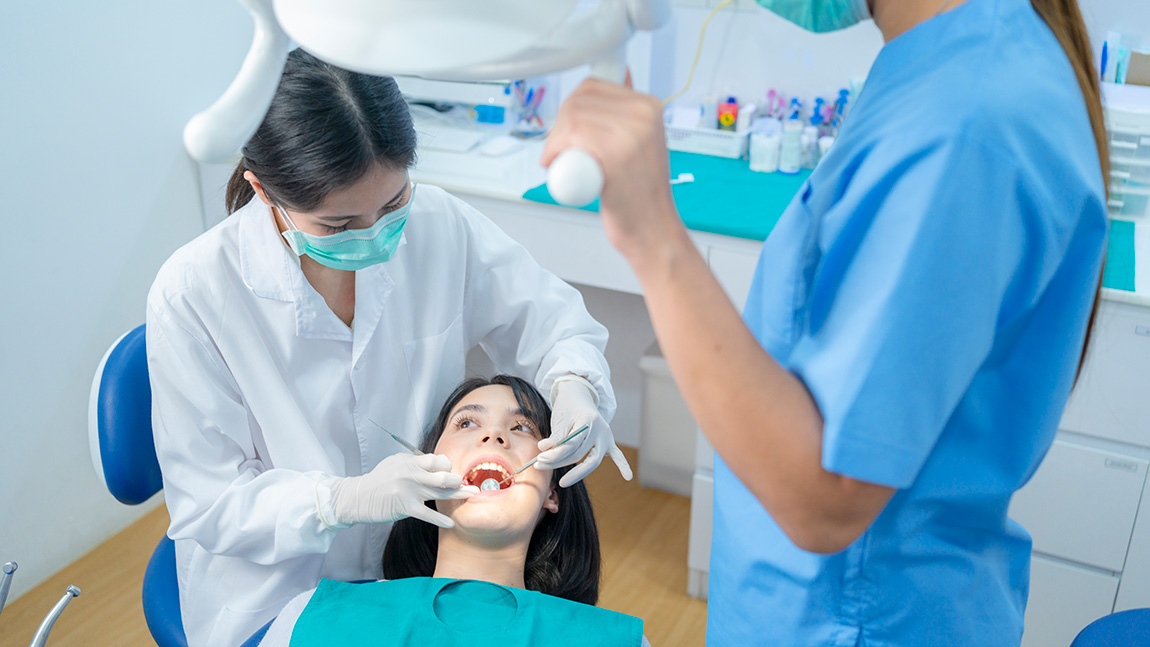There can be many causes for extractions include:
- Severe tooth decay
- Damaged, broken or infected teeth
- Teeth that do not come in correctly (or at all)
- Gum disease
- Making room for teeth to shift during orthodontic treatment
- Side effects from certain medications or treatments
There are two types of tooth extractions. The first is called a simple extraction. As you can probably tell from the name, this is a basic, minimally invasive procedure. When a tooth is entirely visible in the mouth, we can remove it without affecting the surrounding bone or gums.
The other type of extraction is known as a surgical extraction. Sometimes, a tooth or a piece of a tooth will be stuck below the gumline. In these cases, the dentist has to move or remove gum or bone tissue in order to extract what is left of the tooth.
We will determine which kind of extraction you need by taking x-rays beforehand. .The most important part of tooth removal is the aftercare. Whether you have a simple or surgical extraction, you need to carefully follow your dentist’s directions. Failing to properly care for the tooth socket makes it much more difficult to heal and can cause dry socket. For about three days after the extraction, you also need to avoid smoking, drinking out of straws, spitting or blowing your nose. All of these things create a level of pressure that can dislodge the blood clot & open the socket. If this happens, you will get what is known as a dry socket. Dry sockets are painful & require intervention. Please call us right away if you get one.

